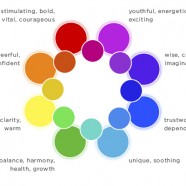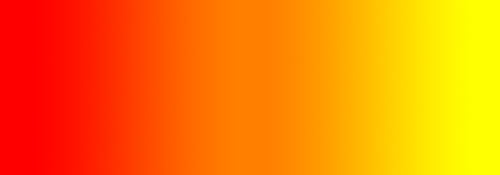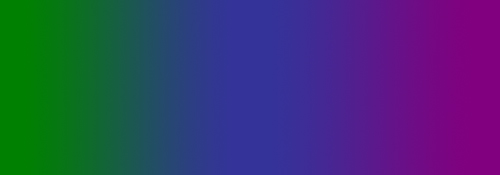LEDs and the Psychology of Light and Color
“LIGHT reveals the glories of the external world and yet is the most glorious of them all. It gives beauty, reveals beauty and is itself most beautiful. It is the analyzer, the truth-teller and the exposer of shams, for it shows things as they are.”
Edwin D. Babbitt, Principles of Light and Color
While interior design plans give plenty of attention to wall paint and floor colors, lighting plays a critical role that is too often overlooked. Color and lighting influence our psychological functioning and well-being on a day-to-day basis, and understanding these influences is important when creating “human-centric” spaces.
Designers have been using advanced color knowledge in this way for years, and the customizability of LED lighting now allows them to do the same with light. Let’s take a closer look at LEDs and the psychology of light and color.
Humanity’s fascination with color has been with us since the dawn of civilization, with different colors used to symbolize and express various moods in ancient artwork spanning from Greece to Tibet. Color theory can be somewhat subjective, as certain colors elicit varying reactions in individuals based on personal preference and cultural backgrounds. It’s a truly interesting scientific field, and a great deal of thought has gone into exploring the psychological effects of color.
One way of comparing colors in the visible spectrum is to divide them into “warm” and “cool” categories. The warm colors include red, orange, and yellow—think of the sun setting on the beach, or maple leaves strewn across the yard in early fall. These colors generally convey passion, positive energy, enthusiasm and happiness.
In contrast, the cool colors include green, blue and purple—think of a solitary walk on a full moon night, or the depth of the ocean sea beneath a sleeping fisherman’s boat. Those colors convey a sense of relaxation, reservation, intrigue and professionalism.
Given what we understand about how color impacts our mental state, it’s easy to see its importance in interior design. We can now, for instance, use different colors of LED lighting to shape the “feeling” in any environment. Let’s explore each color in terms of how it impacts the human psychological experience.
Red (warm):
Red is the color of fire and blood. It is a stimulating color and is used by designers to heighten the senses. Red stands out, is never boring, and can even increase metabolism. Be careful though – red is also associated with anger and can be overwhelming or irritating to those who are easily stimulated.
It is also flattering to the skin, so if you’re looking to create a “sexy” LED lighting environment, red is a good choice.
Pink (warm):
Pink lighting is playful, feminine and warm. The color works well as an accent by adding freshness, energy and glamour to a room. Be careful with pink, as its eccentric nature may turn off some people if used excessively.
Orange (warm):
Friendly and approachable, orange is the color of happiness and innovation. Certain shades of the color are associated with changing seasons and the earth; using orange LED lighting commands attention and creates energy without the overwhelming feelings associated with red. This is a good choice for residential spaces where you want to make guests feel welcome.
Yellow (warm):
Optimistic and uplifting, yellow activates memory and stimulates the nervous system. Yellow, especially the lighter shades, is also associated with happiness and sunshine. Installing yellow LED lighting will promote unity and communication as well as sparking creativity, making the color a good choice for commercial offices and the workplace.
Green (cool):
Green, a neutral color, is associated with nature, and has a calming effect on the senses. It can also represent growth and new beginnings. Green has a balancing and harmonizing effect, and is very stable. Use green in a commercial office setting to convey feelings of wealth, stability, and renewal.
Blue (cool):
Blue conveys calmness, freshness, strength, and responsibility. The color is also connected to peace and has spiritual and religious meaning in many cultures as well. The meaning of blue changes dramatically depending on the shade. Light blues are relaxing, while bright blue can be refreshing. Using paler shades of blue can make a room feel more spacious. The color’s relaxing nature works well in the home, such as in bathrooms or bedrooms.
Purple (cool):
The color purple sparks creativity and will add an eccentric feel. It is moody, spiritual and enchanting; dark purples in particular give a sense of wealth and luxury, while light purples are associated with spring and romance. Using purple is an artistic choice, and provides a mysterious feeling to any space.
White:
White is the color of innocence, purity and cleanliness. Due to its clarity, neutrality and resemblance to sunlight, white light is by far the most common lighting choice for interior space. Some people think white is boring, but anyone familiar with lighting will know this is not the case. There are a myriad of white lighting options available – Flexfire LEDs strip lights, for instance, come in warm, natural or bright white.
The Psychology of Color Temperature
Every light source, even white light, emits a characteristic known as “color temperature.” Differences in color temperature, which is measured in kelvins (K), account for the various shades of light we perceive and are closely associated with human psychology.
Lower temperatures (2,700-3,000K) appear as “warm” colors, such as yellow and orange. As these are the colors of light during sunrise and sunset, low color temperature often makes us feel relaxed and dreamy.
Higher temperatures (5,000K or more) appear as “cool” colors such as blue and green. Toward midday, light increases in temperature. In accordance with our body’s circadian rhythm, higher color temperatures increase our concentration and make us feel more alert.
Contact Flexfire LEDs to learn more:
Still have questions about how you can use light and color in your LED project? Contact us or give us a call at (925)273-9080.















